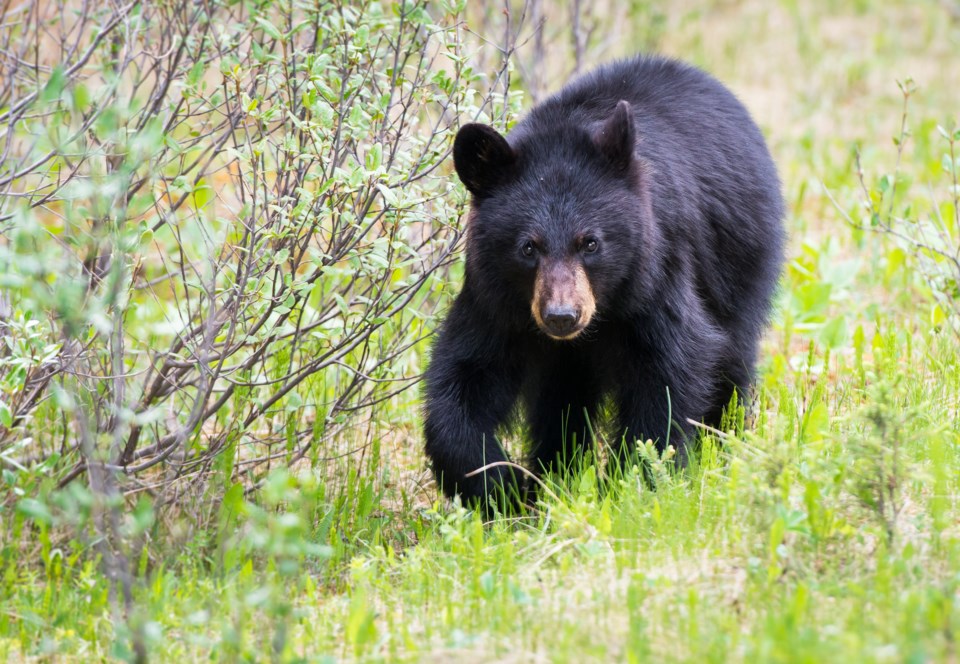A young black bear was killed by conservation officers this week, after it had reportedly accessed several Whistler homes over a two-day span—including while people were still inside.
On Saturday, July 15, the Conservation Officer Service (COS) received reports of a bear entering two homes and a garage in Cheakamus Crossing. The garage and one of the residences the bear entered were occupied at the time, said Tim Schumacher with the COS.
“When the bear was in Cheakamus, it was very persistent with a homeowner. The homeowner was actually inside the house with the bear, and after the owner ended up getting the bear outside, it was trying to come back in and pawing at the windows. It also bluff-charged her inside the home,” he added.
The following day, on July 16, the COS received another report of a bear that entered a home, this time in Spring Creek. Conservation officers determined it was the same bear that accessed residences in Cheakamus based on multiple photos of the animal provided by onlookers.
In Spring Creek, the bear reportedly broke through a screen door and remained inside the home for “an extended period of time,” Schumacher said. The bear bluff-charged both the occupant when they tried to re-enter the home, and the attending conservation officer on the scene.
“The bear came out of the home and eventually bluff-charged the officer four times, [from] a distance of three or four metres away,” Schumacher added. “The responding officer was screaming at the top of their lungs and it was still approaching.”
The male bear, estimated to be about a year and a half old, was not tagged by COS and had no known conflict history. But given its rapidly escalating, aggressive behaviour, and the fact it had entered multiple homes, conservation officers made the call to kill the animal onsite in Spring Creek on July 16.
As Whistlerites try to beat the heat, Schumacher advised the public to use a stick or a stopper on their sliding doors so that they can’t be opened farther than the width of a small bear’s head, about 15 centimetres.
“We have also had issues with this in Nordic and that’s what was recommended at the time,” he said.
As always, the COS urged the community to call in concerning bear behaviour and encounters early, “so we can intervene before bears get to the point where they’re entering homes,” advised Schumacher.
Conservation officers relocated a different black bear on Wednesday, July 19 after it had repeatedly eaten from Saskatoon berry shrubs in the village.
“We’ve had some bears persistently accessing the village on a daily basis throughout the day and the evening,” Schumacher explained. “We’ve identified some attractants in the village that are being addressed, and it was more than one bear accessing the village. There were at least two. We’re trying to keep them out of the village as best we can.”
Saskatoon berry shrubs, which can grow up to five metres tall, have been in the village “as long as I can remember,” Schumacher said, but it’s only recently the COS has noticed black bears accessing them regularly.
“They didn’t really seem to be much of an issue in the past, and this year, particularly in the past week, the bears are climbing them and breaking the branches,” he added. “We’ve identified it with the municipality and we’re working on a solution to make sure that attractant is secure from here on out.”
This most recent death represents the second black bear killed by conservation officers in Whistler this year. In late April, an elderly, emaciated bear that had shown signs of severe malnutrition and was spotted bluff-charging people in and around the village, was shot and killed by the COS near the day lots.
The public can report wildlife-human interactions where public safety may be at risk by calling the Conservation Officer Service’s 24/7, toll-free RAPP line at 1-877-952-7277.






